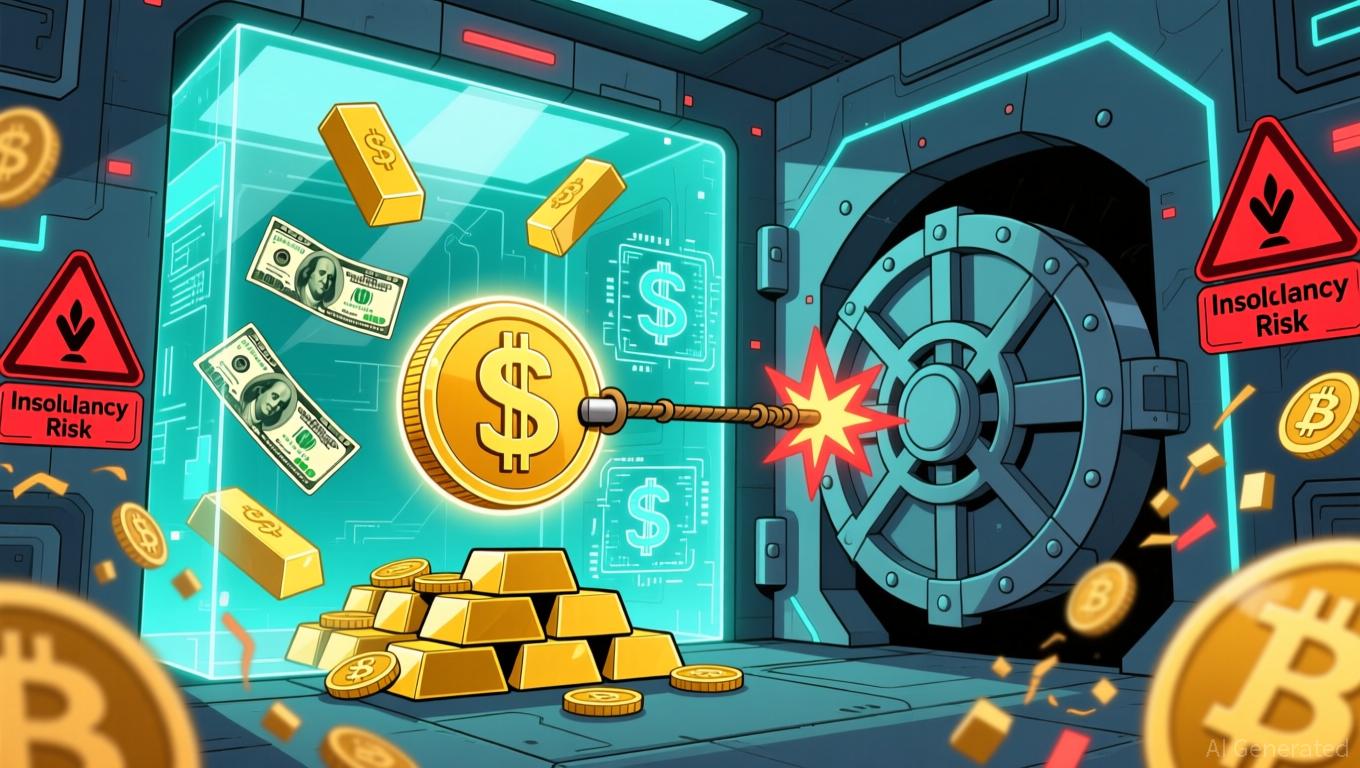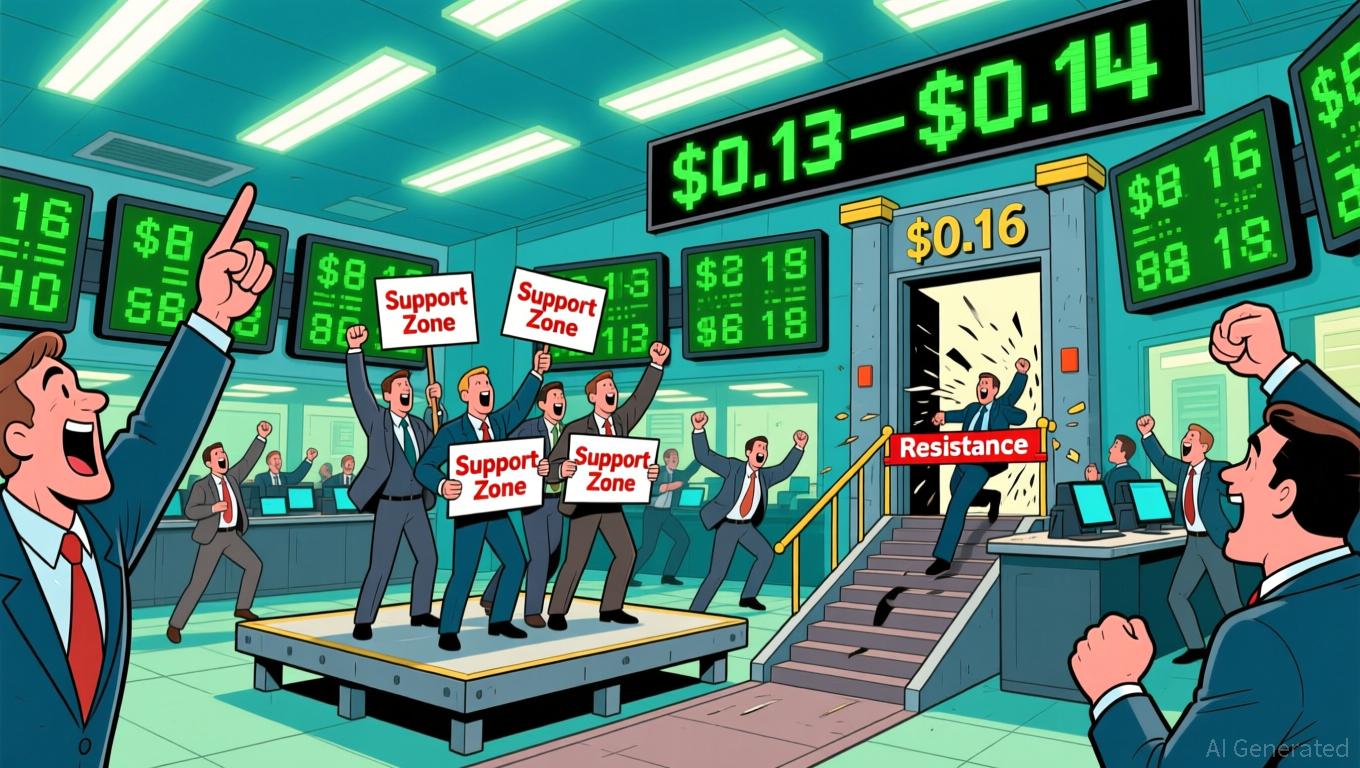Peirce’s Ironic NFTs Highlight Tensions Between Crypto and Regulation
- SEC commissioner Hester Peirce announced a satirical NFT project, "The Dog’s Breakfast," to critique crypto industry dynamics post-tenure. - She criticized the SEC’s enforcement-heavy approach under Gensler, highlighting recent shifts toward clearer crypto regulations and investor protection frameworks. - Peirce’s NFT collection symbolizes the tension between institutional oversight and crypto innovation, aligning with the SEC’s evolving regulatory strategy.

Hester Peirce, a commissioner at the U.S. Securities and Exchange Commission (SEC) known for her strong support of the cryptocurrency sector, has revealed her intention to remain active in the non-fungible token (NFT) arena after her term. During a Coin Center gathering on September 25, 2025, Peirce playfully shared her idea for a satirical NFT series called The Dog’s Breakfast, which will include characters that parody different personalities and trends within the crypto community. Her comments highlighted both a shift in the SEC’s approach to digital asset regulation and her ongoing dedication to promoting transparency in crypto policies.
Nicknamed “Crypto Mom” for her push for fair crypto oversight, Peirce mentioned that although her SEC term concluded in June 2025, she could continue serving until a successor is appointed or the next congressional session starts. In her address, she joked about possible post-SEC pursuits, such as beekeeping or running a “casual wear T-shirt exchange,” before settling on her “Plan NFT.” She described the collection as a playful take on notable figures and stereotypes in the crypto space, including regulators, developers, and skeptics. Characters like “CryptoMom,” “T-Squared (Terrified TradFi),” and “HyperTyper” were introduced as humorous reflections of industry trends, regulatory hurdles, and speculative tendencies.
A major focus of Peirce’s speech was the SEC’s changing perspective on cryptocurrency. She criticized the agency’s previous emphasis on enforcement actions during Gary Gensler’s leadership, arguing that it hindered progress. “Throughout much of my time here, I couldn’t persuade my colleagues in government to give you a fair shot,” Peirce remarked, referencing the SEC’s enforcement-heavy strategy. She pointed to recent changes, such as the agency’s move toward clearer rules and the creation of a crypto task force under her guidance. This group, she explained, is working to craft policies that protect investors while encouraging industry advancement, marking a shift from earlier methods.
Peirce also addressed the SEC’s latest legal and regulatory changes. The commission has recently dropped several long-running enforcement actions against crypto businesses and is now prioritizing the development of digital asset guidelines, including the possible approval of exchange-traded funds (ETFs). Observers see these steps as signs of a more flexible regulatory stance, especially since Gensler’s exit in January 2025. An upcoming U.S. Senate bill on market structure is also expected to further define the SEC’s responsibilities in crypto oversight, according to reports from CoinCentral and Cryptopolitan.
While her remarks were lighthearted, Peirce stressed that clear regulations are crucial for the industry’s future. “We’ve had regulatory uncertainty for far too long,” she said, encouraging innovators and business leaders to create solutions that improve financial access and security. Her statements reflect recent developments, such as the SEC’s willingness to consider crypto ETF approvals and its partnerships with industry players to clarify how securities laws apply to digital assets.
Industry experts and participants have taken Peirce’s statements as an indication that the SEC’s regulatory transformation is ongoing. The agency’s recent decisions—like ending enforcement cases and opening discussions with crypto companies—demonstrate a practical approach to balancing new technology with investor protection. Peirce’s NFT initiative, though humorous, also symbolizes the intersection of regulatory authority and the decentralized spirit of crypto, illustrating the ongoing push and pull between formal oversight and grassroots innovation.
Disclaimer: The content of this article solely reflects the author's opinion and does not represent the platform in any capacity. This article is not intended to serve as a reference for making investment decisions.
You may also like
Bitcoin News Update: S&P Rating Drop Highlights Tether’s Risky Asset Holdings and Lack of Transparency
- S&P downgrades Tether's USDT to "5 (weak)" due to high-risk reserves and transparency gaps. - Tether's 5.6% BTC exposure exceeds overcollateralization margins, risking undercollateralization if prices drop. - CEO dismisses critique as traditional finance bias, claiming no "toxic" assets in reserves. - Regulators intensify scrutiny as stablecoin centralization risks emerge amid $184B USDT circulation. - S&P urges Tether to reduce risky assets and enhance reserve disclosure to rebuild trust.

Dogecoin Latest Updates: Is a Repeat Performance on the Horizon? Holding $0.15 May Signal a 611% Rally for Dogecoin
- Dogecoin (DOGE) stabilized near $0.15 support, triggering historical 611% rally potential to $1 by 2026. - Grayscale's GDOG ETF and pending Bitwise BWOW ETF mark institutional adoption, though initial inflows remain muted. - Technical indicators show mixed momentum with RSI near oversold levels and key resistance at $0.16. - Market remains divided as ETF-driven liquidity and on-chain infrastructure contrast with macroeconomic and regulatory risks.

Turkmenistan’s Approach to Cryptocurrency: Centralized Oversight Amidst a Decentralized Age
- Turkmenistan legalizes crypto trading under strict 2026 regulations, granting state control over exchanges, mining , and custodial services. - Law mandates KYC/AML compliance, bans traditional banks from crypto services, and classifies digital assets into "backed" and "unbacked" categories. - Central bank gains authority to operate state-monitored distributed ledgers, contrasting with decentralized approaches in South Korea and Bhutan. - Framework aims to balance innovation with oversight, testing Turkme
Bitcoin News Update: Has $162 Billion Left Crypto Due to Institutional Buying or a Broader Market Pullback?
- BlackRock deposited 4,198 BTC and 43,237 ETH into Coinbase amid crypto sell-offs, despite $355.5M Bitcoin ETF outflows. - A 1.8M BTC ($162B) overnight exchange withdrawal sparks speculation about institutional accumulation or portfolio rebalancing. - $40B in BTC/ETH exchange inflows and record $51.1B Binance stablecoin reserves highlight institutional demand for regulated crypto products. - On-chain data shows 45% of large deposits (≥100 BTC) and 1.8M BTC withdrawals, indicating mixed market sentiment ah
